It’s no secret that the world’s population is in desperate need of sustainable new food sources and means of growing what we consume. According to a UN report producing one kilo of rice requires about 3,500 liters of water, one kilo of beef some 15,000 liters, and a cup of coffee about 140 liters. Here in Berlin, just steps from Kreuzberg’s canal and around the corner from the hedonism of Chester’s nightclub, solutions are being sought. The founders of Infarm, Erez and Guy Galonska and Osnat Michaeli, however, did not start with the science.
They began with taste. Today, the urban gardening project Infarm presents one of the city’s most exciting answers to the expansive question of sustainability. With its experience-based approach to growing, eating and communicating green, Infarm’s small team proves that solid ideals and consistent practice can build a thriving business. We sat down with Erez and Guy to talk about their vertical garden’s history, present and future. We also sampled Infarm’s delicious lettuce.




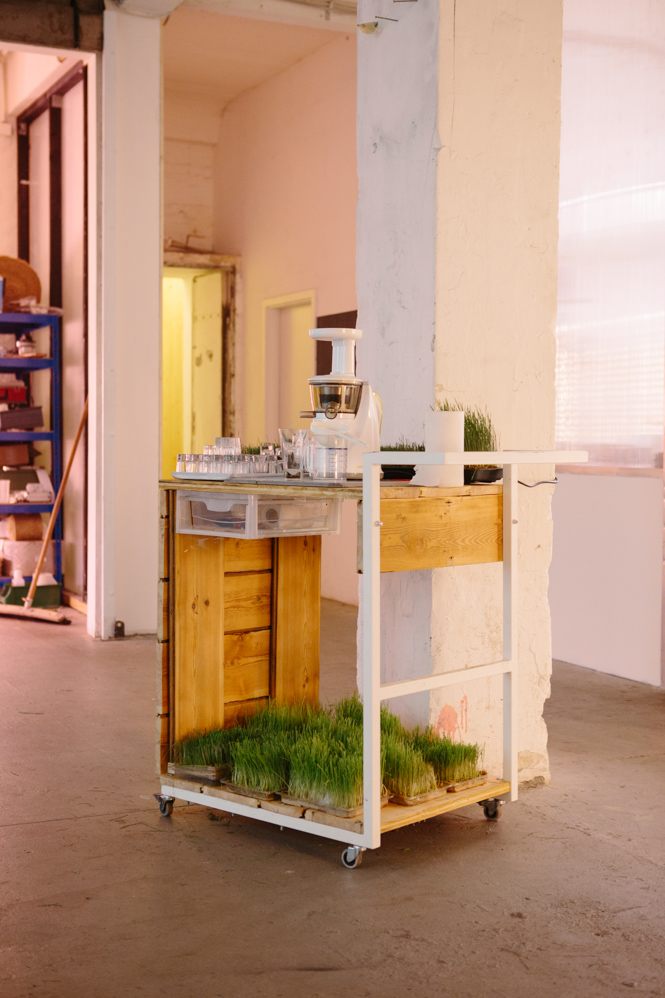
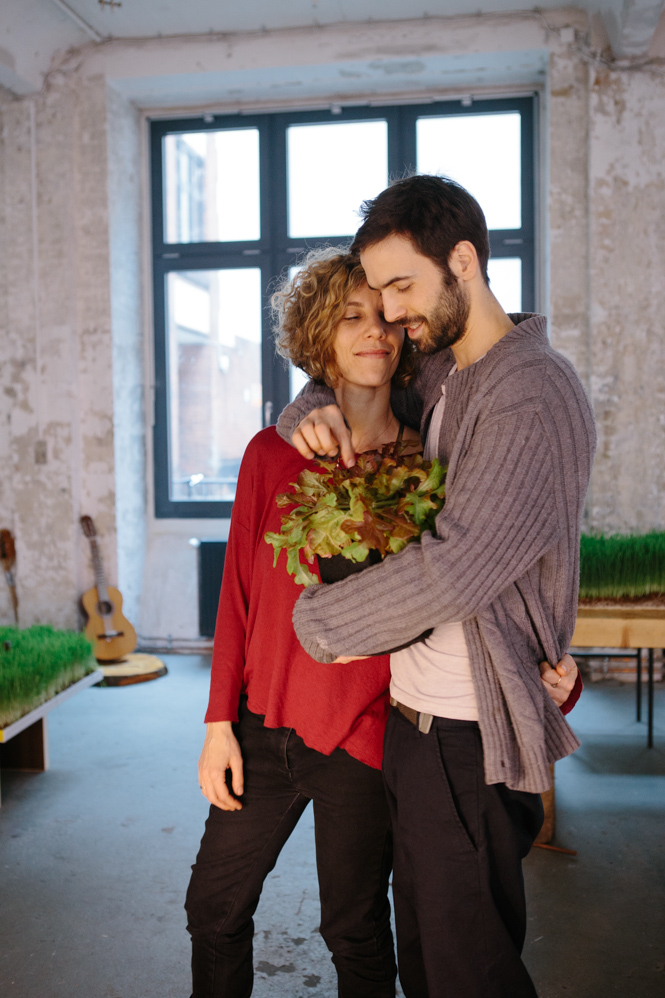

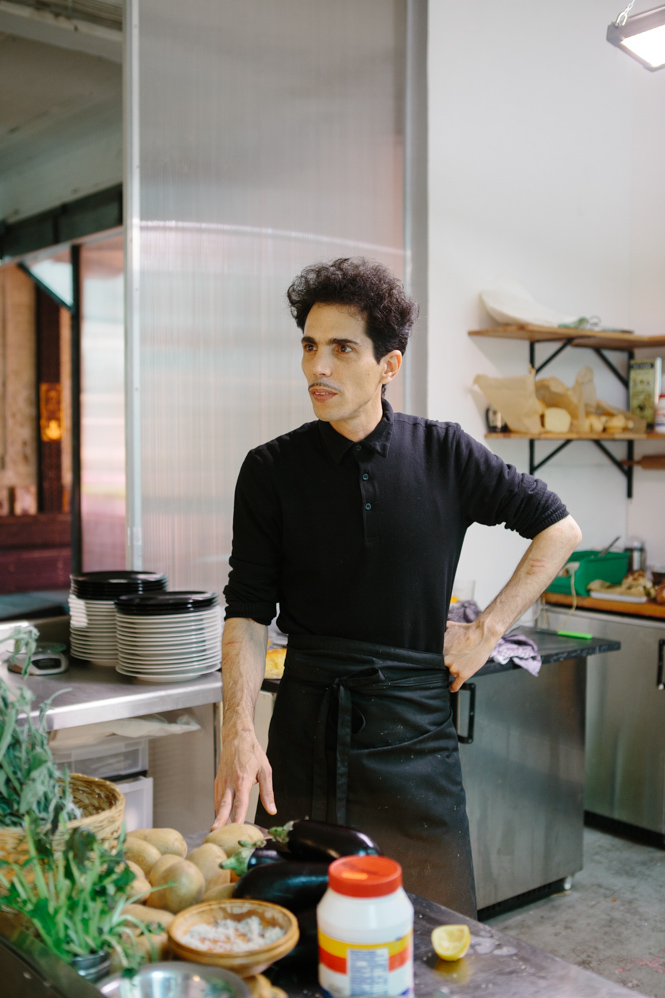


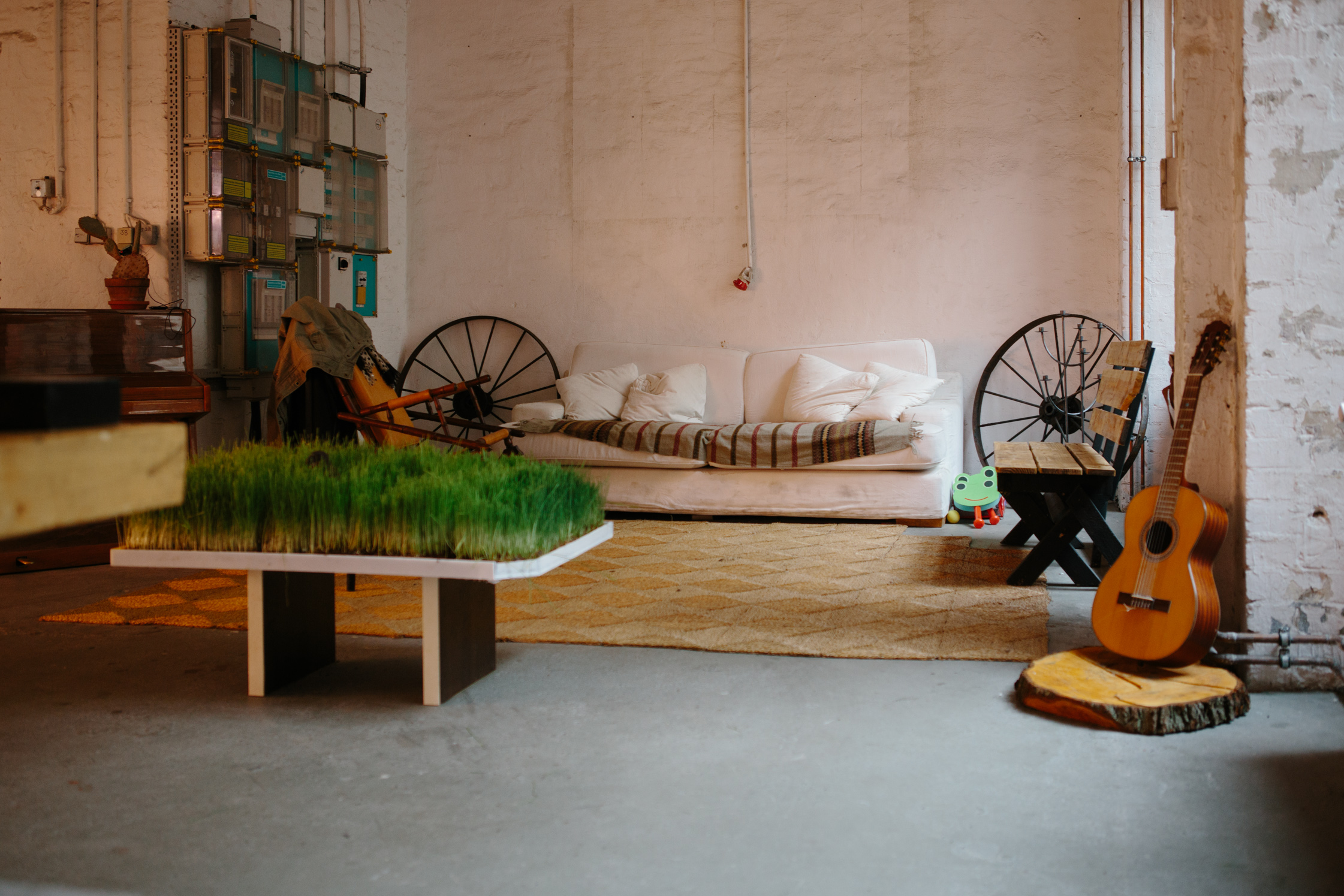














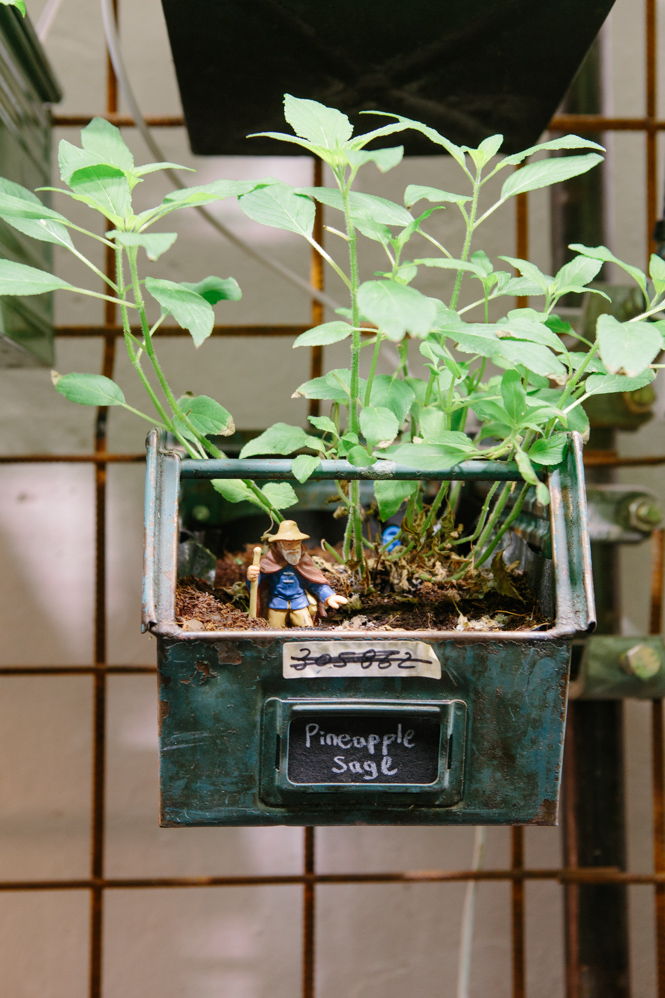
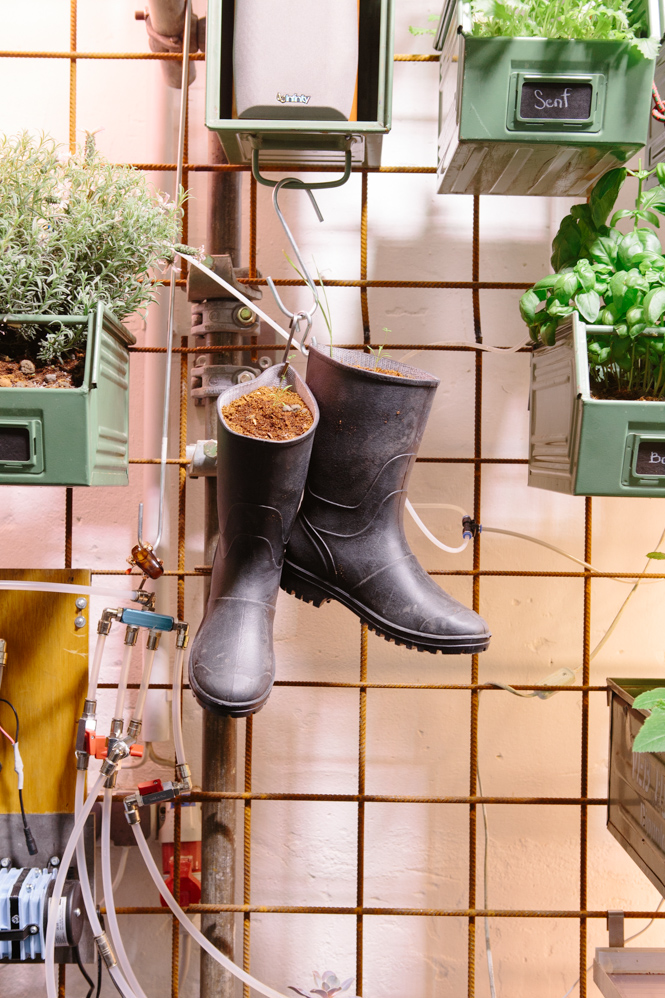

Let’s start with the basics: who are you, where are we, what are we doing here?
Erez: We are Guy and Erez Galonska, brothers, sitting in Infarm, our urban indoor farm in Berlin-Kreuzberg.
And how did you get here?
Erez: We took a flight from Tel Aviv in December 2012 and arrived officially in Berlin to start this project. Before that I used to live here. (pauses) It’s quite a long story.
It started in our house in Neukölln when we built hydroponic system that was around 10 meters of pipe garden. We hung it vertically and created space for a total of 150 plants. It took maybe one month to figure out how to build it and then one month after planting the seeds, we had a jungle. I guess from this moment on – I think it was February 2013 – we knew that we had something. It was snowing outside and we had fresh vegetables inside. It was a bit strange, because it felt like a NASA room.
NASA is one of our inspirations for this project, actually. After reading about their approach – well, we just wanted to do something more artistic and also to combine research. We found a studio and we moved the pipes and equipment from our home to a studio which was just 20 square meters in size. We constructed an installation of tomatoes and after just one month it was time for 48hours Neukölln and lots of people came by and tasted microgreens – they were sort of shocked to find tomatoes growing up to three meters high inside a pipe.
Guy: Yeah, it was a kind of mad professor’s lab.
Erez: And we designed it like this, with all the tools for hydroponics on the walls, very visible. It felt like something between a garden and a laboratory. I think this mix is quite new for people. It created an important aesthetic for us, one which people really seemed to appreciate. Once they tasted the microgreens the project became about flavors and experience. From the beginning Infarm has not just been about watching a tomato grow.
I think in that moment we realized that there is something we can do, that we can bring our somewhat futuristic world to contribute to the progress of humanity. This is our more esoteric approach, but of course we also want to do something practical and for us this means something earthy. Of course we are growing food, although with water. For us there is an important combination between gardens, flowers, trees – which is nature – and this more futuristic side of things: LED, artificial light, hydroponic fogs, the more NASA-style elements. We combine these two sides through experience. Experience for Infarm means tasty food: herbs from the vertical garden, for tea, for salads, for fresh products of any kind.
What are your backgrounds in? Where were you five years before Infarm?
Erez: We were kids.
Studying?
Erez: No, we are autodidacts. I’ve been a cinematographer for most of my life. I’ve had a camera in my hand since the age of 13, so lighting has always been important to me. Cinematography comes from “kinema” and “graphein.” It’s about writing in light.
Yours sounds like a more technical background.
Erez: Yes, a technical one certainly but as a cinematographer I also studied theory and philosophy. Here we’re also bridging our philosophies and concepts with practical, hands on applications.
Guy: I used to work as a cook. I studied Chinese medicine for a year but that didn’t really work out. I’ve traveled a lot, too.
Erez: When I returned to Israel after my service in the army, well, in fact anytime I returned home, Guy and I would meet and exchange experiences. We traveled a lot. Guy for four years and I traveled for seven. We would meet up in our parents’ homes and discuss stories, ideas, dishes we had tried, whatever. The last time we met – Guy had finished his studies and I had returned from a trip to Berlin – we created the first hydroponic system in our parents’ house.
How did you know that Berlin was the place to realize this idea?
Erez: The idea was born in Berlin. Well, actually it was born in La Gomera. We discovered we could grow plants in water while visiting La Gomera, a place we wanted to live. We nearly bought a house but then had a better idea to take an Airstream and install a hydroponic system in it. We wanted to drive it around Europe as a kind of pop-up restaurant. This was a dream and we came to Berlin to fulfill it. It was winter – and then we’re back to the story I began with.
And how did you actually get this space that we’re in today?
Guy: The Internet.
Erez: (laughing) Mmmm, well, a combination of things happened.
Guy: We had seen it before when it was an atelier belonging to Max Frisinger.
Erez: He is an amazing artist who re-uses items, often kinds of garbage, for his sculptures.
Guy: We cycled throughout Berlin looking for places and saw this place and knew it was perfect. Then we saw it on the Internet and realized upon coming again that we’d already seen the location. It seemed meant to be.
Erez, I have a question about something you said earlier. You used the phrase “the progress of humanity,” which is quite utopian. What is it for you that connects Infarm to that optimism, that ideal?
Erez: First of all, it’s what’s happening today. We’re going through a paradigm shift. Infarm is part of this movement, this shift of consciousness. The shift could start with wanting a better education for our kids, eating healthier food, any number of kinds of awareness. Important is that people are starting more and more to associate happy lives with these kinds of priorities. Infarm approaches food and the problems associated with it.
Cities today have a huge problem with waste: they are creating more than they can dispose of. People are pouring into cities, and in turn cities are becoming bigger and bigger, with more and more waste. It’s not a sustainable growth model and if we look ahead 20 years, 70 – 80% of the world’s population will live in cities. We will need land to grow food, though this is, of course, just one of the questions at hand.
It is one we chose to focus on, and with Infarm we want to create green space in the city. Practical green spaces – not just about aesthetics. We need to be efficient, to have a focus on technicalities. We have started to develop a model for cities: small farms integrated inside buildings, and thus buildings that become self sufficient.
And in terms of practicality, what is the business side of this model?
Erez: The business of Infarm develops from demand. It started with the microgreen kit.
What’s that?
Erez: The microgreens project started in the Prinzessinnengarten and we essentially just grow a lot of plants at a micro level, because at this level they are very tasty and nutrient dense. In the Prinzessinnengarten we created more of an installation, but soon people started to say to us “Great, but we also want to be able to grow these kinds of products. Do you sell seeds?” We thought, ah ha, people want to be able to do this themselves, to have a kit.
So we created the kit, as an example of part of a business model, which has allowed us to in turn spend more time researching. We then brought out another kit which is even more efficient. This was our origami greenhouse. So this is just an example of how the business side developed with our microgreens but I think it’s also something that we see with other ideas we have. For example here in this space, visitors see that we grow fresh food for our cook Charlie to use in the restaurant and then, people from Hotel Bikini Berlin – Christoph Hoffmann or Werner Aisslinger – say ‘let’s bring this vision to our space, to our restaurant’.
Can you describe your involvement with 25hours Hotel?
Erez: Well to begin with they are big fans of the so-called Green Revolution. They are trying to promote the same ideas we believe in, and growing your own food is among them. We are currently planning another system in the Hotel Bikini Berlin, which we will be herbs. And these will be used in the restaurant there, Neni.
Werner Aisslinger approached you, right?
Erez: Werner is another one already talking about these subjects. He is already thinking about this kind of future. So when he saw our set up in the Prinzessinnengarten he just thought (claps hands), of course I will do something with this team. We are already speaking about our third project together.
What have been Infarm’s greatest challenges in communicating these ideas or belief in a vital paradigm shift?
Guy: It is certainly a sharp shift but it’s got a wind at its back. People are striving for the change. We were concerned when we first began but the response was different from what even we expected. People were open, accepting and precisely this reaction has helped us expand so quickly. Because of demand. Maybe it has to do with being in Germany. When I explain to Germans why we use artificial lights, they get it.
Why do you use lights? Sorry.
Erez: First of all you have to ask the question. Germans mostly – or people in general who “know” how food should be grown, i.e. with soil and sun – they come in here and they see plastic. They don’t understand. They assume the artificial lights take too much energy.
Guy: Some, not all. I wouldn’t say that’s what people here say in general. And for those who do ask, I explain that it uses energy but compared to normal produce you buy in the supermarket it takes far far less. Here everything that has to do with energy is revealed, it’s transparent. In a supermarket, the hidden energy and hidden costs are huge.
Erez: Not only this, we are also using a green energy provider. We also try to collaborate with people in fields that relate to our own.
Can you share some of your data, your facts behind growing greens?
Guy: Sure. The lettuce we grow here produces four times less carbon dioxide than normal, store bought lettuce.
Erez: If we speak about the wind behind our back, I think it’s not only because we are doing something which is more efficient and green but also because there is a real problem with the global approach: hunger cannot be solved. How will we feed nine billion people in 2050? How will we feed seven billion people ten years from now? The energy point can go into an argument but at the end of the day we don’t have another choice. If we want to feed the world in 2050 we will need two more planets
Do you see Infarm as scaleable? What is your vision of expansion?
Guy: The approach is based on small, smart farms. When I say small I mean 50-200 square meters in size.
And how big is this space?
Guy: The space itself is 300 square meters but the vertical farm here takes up roughly 30 square meters. This maximizes space efficiency. Our vision would be to see small farms throughout the city which produce locally and with great variety. The farms would communicate with each other, which in a way would create one really big farm.
Erez: A decentralized farm with biodiversity.
How many varieties of greens do you grow here?
Erez: A lot. Maybe 100, 120.
What have people visiting Infarm been the most receptive to? What have they enjoyed the most?
Erez and Guy: The taste.
Guy: When someone tastes a lettuce or anything grown here. Even if you were afraid or concerned about the lights, the water etc., once you taste it, your worries vanish. Your body recognizes the healthiness.
Erez: The ends meet; the big philosophy and the taste meet. This great idea actually tastes good. The vision is not a dream.
Guy: It’s a very basic, human level.
Taking the wheatgrass that you make here as an example, I’m curious as to how the smaller elements piece into Infarm. Do you see yourselves as tapping into a contemporary trend? Or perhaps ultimately see Infarm as a brand?
Erez: It depends what the brand stands for. Are you speaking about the financial and business side of a brand?
Well, I think that side is tied up with the more creative work, right?
Erez: No, I don’t think so. In the business world today, we’ve understood that there are two ways to go: the financial or conservative way of running a business. Usually this means you bring more workers and less money to create more jobs. Or in Berlin, this means interns. We want to shift this model as well and to create more of a sharing economy. If Infarm can become a brand within this model, there will be a lot of happy people behind and with us. It’s a question of choosing the right economic model.
Do you think people are ready for this kind of shared economy? Just a few days ago there was a huge taxi strike in Berlin over the app Uber.
Guy: Of course there are always conservatives who are against these kinds of initiatives.
Erez: I consider Berlin quite conservative. For example with iPhones; you don’t see people rushing to the store to get the newest iPhone, or even to get an iPhone. In America, as soon as there is a new idea, people want to be part of it. Immediately. America has what you call early adopters.
And in Israel?
Erez: It’s America. Everyone is interested.
So you find that Infarm is relevant there?
Erez: Yes, absolutely. Everyone is interested in the concept.
And have you found people who are uninterested or even doubtful?
Erez: Universities: academics, professors, these kinds of older people. In speaking to them about indoor growing it became rapidly clear that they don’t see it as efficient. They also lack the facts and research that we have conducted.
Is that research something you’d be interested in disseminating, too?
Erez: Of course. Having someone put these facts into the “right” language is a goal of ours.
We recently made our first contact with the research university here in Berlin and we are now waiting for their response. It’s a very slow process with universities of course, but we have a lot to share and they do too. They represent the current situation and there is a lot to learn from this because in a way there is a hidden power inside of the processes of how they grow food. It’s not just about the operation but also the details. I read that in the future people won’t be able to live on farmland because it will be contaminated with chemicals. We don’t see it in front of us, but the situation is becoming untenable.
The idea of cradle to cradle is approaching a new industrial revolution. Interested people are talking about the future of what’s happening now, and it is an ugly one. We need to change our practice. Fast. This is what we have to do.
Thank you Guy and Erez for your time and your insights. We are happy to be part of your change and your project! To find out more details about Infarm visit their website here. Find a special feature about Infarm in the second issue of Companion, a project developed by FvF for 25hours Hotels.
Interview & Text: Isabel Parkes
Photos: Philipp Langenheim
